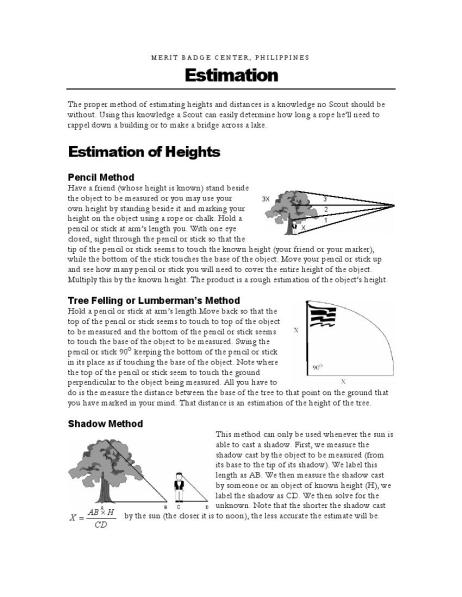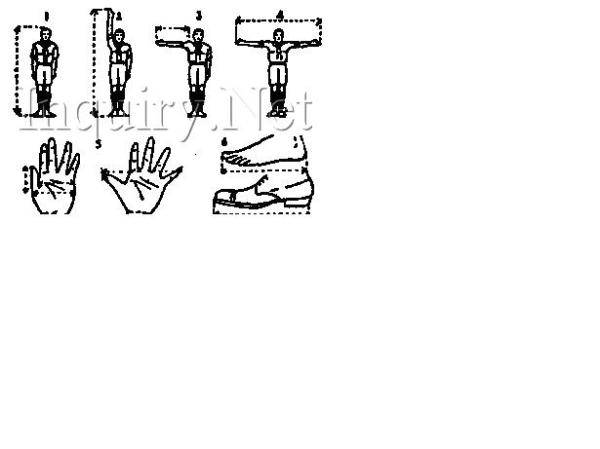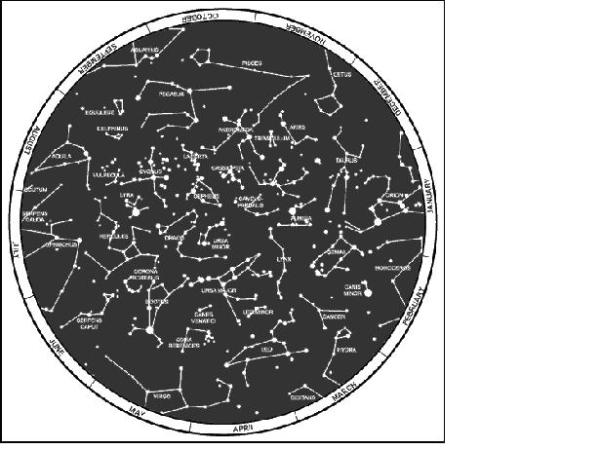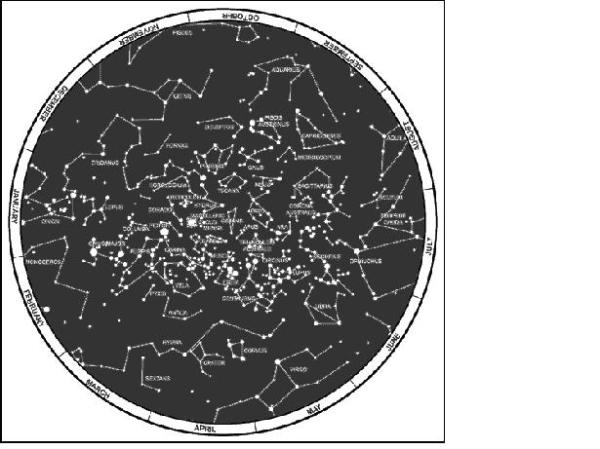Homeall faith prayercampfire opening & closing songforms & certificatessyllabusWelcome
K Ramasamy's Blog for KVS Scouts
PRAVESH TO RAJYAPURASKAR – AN OUTING
Archive for the ‘3. DWITIYA SOPAN’ Category
Posted in 97.E-BOOKS ON SCOUTING, COMPASS, tagged COMPASS,MAPPING, scout quiz on April 22, 2015 | Leave a Comment »
Two books on Compass
2) mapcompass
Posted in HITCHES, tagged HITCHES, MARLINE SPIKE HITCHES on January 31, 2011 | Leave a Comment »
MARLINE SPIKE HITCH
MARLINE SPIKE HITCH 01
MARLINE SPIKE HITCH 02
Posted in LASHINGS, tagged lashing, square lashing on January 31, 2011 | Leave a Comment »
SQUARE LASHING
SQUARE LASHING
Square lashings are used to bind together two spars that are at right angles with one another.
i) Place the poles on the ground in the shape of a cross. Tie a clove hitch around the bottom pole near the crosspiece. Twist the free end of the rope around its standing part and tuck it out of the way.
ii) Make three or four wraps around the spars, keeping the rope very tight. As you form the wraps, lay the rope on the outside of each previous turn around the crosspiece, and on the inside of each previous turn around the bottom pole.
iii) Then wind three or four frapping turns around the wrapping to tighten the lashing as much as you can.
iv) Finish it off with another clove hitch.
ESTIMATION – HEIGHT AND DISTANCE
Posted in ESTIMATION - DISTANCE/WIDTH, ESTIMATION - HEIGHTS/DEPTHS, tagged ESTIMATING WIDTH, ESTIMATION,ESTMATING HEIGHTS on January 28, 2011 | Leave a Comment »
ESTIMATION – HEIGHT AND DISTANCE
ESTIMATION – DISTANCE AND HEIGHT
Posted in ESTIMATION - DISTANCE/WIDTH, ESTIMATION - HEIGHTS/DEPTHS, tagged ESTIMATING DEPTH, ESTIMATING DISTANCE, ESTIMATING HEIGHTS, ESTIMATING WIDTH,ESTIMATION on January 28, 2011 | Leave a Comment »
ESTIMATION – DISTANCE AND HEIGHT
ESTIMATION - 01
ESTIMATION - 02
ESTIMATION - 03
Posted in ESTIMATION - DISTANCE/WIDTH, tagged ESTIMATION on January 28, 2011 | Leave a Comment »
ESTIMATION
Learning to Judge Distance
As a means of checking your estimates, learn the exact length of your pace. If fairly tall, learn to pace an exact yard, heel to heel. On a quiet road, in a field, or out on the prairie, begin judging short distances to various objects, then pacing to check your “guess.” Gradually increase the distances. Do this in competition with several other Scouts and you’ll find it an interesting game. Remember that the eye measures distance as in an “air line,” from eye to object, and does not allow for irregularities of the ground. In other words, ground distance may be greater than visual distance.
PERSONAL MEASUREMENT
As an aid in making short measurements you should know a number of your personal measurements. Your known hand-span will often be particularly useful. If fully developed your measurements will be close to this:
Breadth of thumb, and nail joint of forefinger = 1 inch (2.54 centimeters). Span of the thumb and forefinger = 6.5″ (or 17 centimeters). Span of thumb and any other finger = 8.5″ (or 21.6 centimeters). Wrist to elbow = 10″ (or 25 centimeters). Elbow to tip of forefinger = 17″ (or 43 centimeters). Your reach, arms out-stretched, will nearly equal your height.
Some Further Hints
At 1/2 mile or approximately 880 yards (or 800 meters) a man looks a post. At 770 yards (or 700 meters) the head is not yet visible. At 660 yards (or 600 meters) the head is visible as a dot. At 550 yards (or 500 meters) the shoulders appear bottle shaped. At 1/4 mile, or approximately 440 yards (or 400 meters) movements of the legs can be seen. At 330 yards (or 300 meters) the face can be seen. At 220 yards (or 200 meters) buttons and details of clothing are recognizable. At 110 yards (or 100 meters) eyes and mouth can be seen clearly.
To estimate greater distances, judge the farthest probable distance, then the nearest possible, and “split the difference.”
Posted in FIRST AID, tagged IMPROVISED STRETCHER, STRETCHERon January 28, 2011 | Leave a Comment »
MAKING IMPROVISED STRETCHER
USING BLANKLETS AND POLES
IMPRPOVISED STRETCHER USING BLANKLETS AND POLES
USING ROPES
IMPROVISED STRETCHER USING ROPE
A PPT ON MAKING IMPROVISED STRETCHERS
FINDING NORTH BY CONSTELLATIONS
Posted in COMPASS, tagged FINDING NORTH, NORTH BY CONSTELLATIONS on January 28, 2011 | Leave a Comment »
FINDING NORTH BY CONSTELLATIONS
Star Method.
(1) Less than 60 of approximately 5,000 stars visible to the eye are used by navigators. The stars seen as we look up at the sky at night are not evenly scattered across the whole sky. Instead they are in groups called constellations.
(2) The constellations that we see depends partly on where we are located on the earth, the time of the year, and the time of the night. The night changes with the seasons because of the journey of the earth around the sun, and it also changes from hour to hour because the turning of the earth makes some constellations seem to travel in a circle. But there is one star that is in almost exactly the same place in the sky all night long every night. It is the North Star, also known as the Polar Star or Polaris.
(3) The North Star is less than 1° off true north and does not move from its place because the axis of the earth is pointed toward it. The North Star is in the group of stars called the Little Dipper. It is the last star in the handle of the dipper. There are two stars in the Big Dipper, which are a big help when trying to find the North Star. They are called the Pointers, and an imaginary line drawn through them five times their distance points to the North Star. There are many stars brighter than the North Star, but none is more important because of its location. However, the North Star can only be seen in the northern hemisphere so it cannot serve as a guide south of the equator. The farther one goes north, the higher the North Star is in the sky, and above latitude 70°, it is too high in the sky to be useful (Figure 9-9).
FIGURE 9.9
Figure 9-9. Determining direction by the North Star and Southern Cross.
(4) Depending on the star selected for navigation, azimuth checks are necessary. A star near the north horizon serves for about half an hour. When moving south, azimuth checks should be made every 15 minutes. When traveling east or west, the difficulty of staying on azimuth is caused more by the likelihood of the star climbing too high in the sky or losing itself behind the western horizon than it is by the star changing direction angle. When this happens, it is necessary to change to another guide star. The Southern Cross is the main constellation used as a guide south of the equator, and the above general directions for using north and south stars are reversed. When navigating using the stars as guides, the user must know the different constellation shapes and their locations throughout the world (Figure 9-10 and Figure 9-11).
Figure 9-10. Constellations, northern hemisphere.
FIGURE 9.10
Figure 9-11. Constellations, southern hemisphere.
FIGURE 9.11
Posted in COMPASS, tagged PACE, SCOUT PACE on January 28, 2011 | Leave a Comment »
Pace (unit)
A pace (or double-pace or passus) is a measure of distanceused in Ancient Rome. It is the measure of a full stride from the position of the heel when it is raised from the ground to the point the same heel is set down again at the end of the step. Thus, a distance can be “paced off” by counting each time the same heel touches ground, or, in other words, every other step. In Rome, this unit was standardized as twogradūs or five Roman feet (about 1.48 metres or 58.1English inches). There are 1000 passus in one mille, and amille was sometimes referred to as a mille passus.
The Byzantine pace or vema (βήμα [ˈvima]) was 2½ feet(pous)
A pace in modern terminology is usually taken as being a single pace rather than a double pace. It has no formal definition but is taken as being around 30 inches
Posted in COMPASS, tagged BEARING, COMPASS on January 27, 2011 | Leave a Comment »
Bearings
A directional compass is shown below. It is used to find adirection or bearing .
The four main directions of a compass are known as cardinal points. They are north (N), east (E), south (S) and west. Sometimes, the half-cardinal points of north-east (NE), north-west (NW), south-east (SE) and south-west (SW) are shown on the compass. The above compass shows degree measurements from 0° to 360° in 10° intervals with:
north representing 0° or 360°east representing 90°south representing 180°west representing 270°
When using a directional compass, hold the compass so that the point marked north points directly away from you. Note that the magnetic needle always points to the north.
Bearing
The true bearing to a point is the angle measured in degrees in a clockwise direction from the north line. We will refer to the true bearing simply as the bearing.
For example, the bearing of point P is 065º which is the number of degrees in the angle measured in a clockwise direction from the north line to the line joining the centre of the compass at O with the point P (i.e. OP).
The bearing of point Q is 300º which is the number of degrees in the angle measured in a clockwise direction from the north line to the line joining the centre of the compass at O with the point Q (i.e. OQ).
Note:
The bearing of a point is the number of degrees in the angle measured in a clockwise direction from the north line to the line joining the centre of the compass with the point.
A bearing is used to represent the direction of one point relative to another point.
For example, the bearing of A from B is 065º. The bearing of Bfrom A is 245º.
Note:
Three figures are used to give bearings.All bearings are measured in a horizontal plane.
Older posts
About this Blog
Dear Scouts and Guides, this is a self-motivated blog created by a scoutmaster to quench your thirst of scouting and guiding information from Pravesh to Rajyapuraskar level. This is a small online attempt to help his beloved scout sons and guide daughters.
Thank You, Scouts and Guides
Thank you scouts and guides for having given more than 8 lakhs visits to this blog.
NO. OF VISITORS
1,280,265 USERS
RSS Feed
SEARCH
Search for:
FOR YOU SCOUTS!!!!!!! (LEVEL-WISE NOTES)
1. PRAVESH3 FLAGS3 SONGSGOOD TURN DIARYHISTORY OF SCOUTINGLAW, PROMISE AND MOTTOSIGN, SALUTE AND LEFT HAND SHAKEUNIFORM2. PRATHAM SOPANFIRST AID, BANDAGES AND SLINGSGENERAL RULES OF HEALTH & BP'S SIX EXERCISESHAND SIGNALS, WHISTLE SIGNALS & WOODCRAFT SIGNSPATROL SYSTEMWHIPPING, KNOTS AND HITCHES3. DWITIYA SOPANCOMPASSESTIMATION – DISTANCE/WIDTHFIRST AIDHITCHESLASHINGSSIGNALLING4. TRITIYA SOPANESTIMATION – HEIGHTS/DEPTHSFIRST AIDKNOTS & HITCHESMAPPINGPIONEERING PROJECTSSCOUTING IN INDIASPLICINGTRESTLE & ROPE LADDERWHIPPING5. RAJYAPURASKAR6. PROFICIENCY BADGES7. ACTIVITIESDWITIYA SOPANPRATHAM SOPANTRITIYA SOPAN8.QUESTION BANKDWITIYA SOPANGENERALIAPRATHAM SOPANPRAVESHRAJYAPURASKARTRITIYA SOPAN9.THINKING DAY91.KNOW MORE ABOUT BP92. PPTs FOR YOU93. SCOUT GRACES94. ALL FAITH PRAYER95. CAMPFIRE96.PICTURE GALLERYBP AND LADY BPKNOTS AND HITCHESPIONEERING PROJECTSSALUTE, SIGN & LEFT HAND SHAKESPILICINGWHIPPINGWOODCRAFT SIGNS97.E-BOOKS ON SCOUTING98.TRITIYA SOPAN TESTING CAMP 2011A MODEL MARK PATTERNAPPLICATION FORMINFORMATION SHEETREQUIREMENTSTESTING METHODOLOGIES99.SCOUTMASTERS4UAMENDMENTSGeneral Scout QuizProficiency BadgesPRAVESHTRITIYA SOPAN
STUDY MATERIAL
syllabus1.pravesh2.pratham sopan3.dwitiya sopan4.tritiya sopan5.rajyapuraskarforms & certificatesdate of birth certificateCOH recommendationpravesh pass certificatepratham sopan pass certificatedwitiya sopan pass certificateactivity completion certificateproficiency badge certificateCOH recommendation for PBfirst page bio-data for general log booksfirst page data sheet for PB notebooksfirst page data sheet for activity booksapplication form for TS testingapplication form for RP testingtest cardwillingness letterto join scout movementto attend ts /rp testing campsto attend other scout activitiesgood turn diary formatall faith prayercampfire opening & closing songWelcome
ARCHIVES
August 2015 (2)April 2015 (6)July 2013 (1)February 2013 (1)December 2012 (1)August 2012 (2)December 2011 (1)October 2011 (2)September 2011 (7)August 2011 (10)March 2011 (14)February 2011 (20)January 2011 (69)April 2010 (53)
LATEST POSTS
Amendments made on 30/11/2014 – Guide SectionAmendments made on 30/11/2014 – Scout SectionE-Books on CompassScout QuizzzzzzzzzzzzzScout Quiz Questions 4 UCampfireAll Faith PrayerCampingCampcraft: A photo GalleryKVS Unit, Cluster, District and Divisional Level Awards
Top Posts & Pages
4.tritiya sopanAPRO - E-BOOKsPRAVESH QUESTION BANKparts of uniform3.dwitiya sopanRAJYAPURASKAR QUESTION BANKTRITIYA SOPAN QUESTION BANKPRATHAM SOPAN QUESTION BANKHISTORY OF SCOUTING IN INDIAcampfire opening & closing song
My followers
RECENT COMMENTS
vyvidh on SAFETY PRECAUTIONS WITH REGARD…
RAMSPLOS on bharat scouts and guides flag
Benesia on hand & whistle signals
bhavani shankar onhand & whistle signals
supreet shukla onPRAVESH QUESTION BANK
PRADEEP KUMAR HOTTA on SONGS
Peshala Prabhapoorna on BP’s six exercises
arun shaji on NEW OFFICE BEARERS
PRABHAT SONI onPRAVESH QUESTION BANK PACK…
Tilesh Kumar onPRAVESH QUESTION BANK –…
sarfaraz on KNOTS AND HITCHES GALLERY
sheru khan onPIONEERING PROJECTS
Karthik on APRO – E-BOOKs
a.subash jain on bharat scouts and guides flag
ramasamypravesh on To the Scouts & Scouters
BLOG ADMINISTERED BY K.RAMASAMY, SCOUTMASTER(HWB), CHENNAI DIVISION, KVS STATE BHARAT SCOUTS AND GUIDES. E-MAIL: ramasamy1975@gmail.com
ADMIN
RegisterLog inEntries RSSComments RSSWordPress.com
Email Subscription
Enter your email address to subscribe to this blog and receive notifications of new posts by email.
Join 263 other followers
Create a free website or blog at WordPress.com.
![]()

















No comments:
Post a Comment